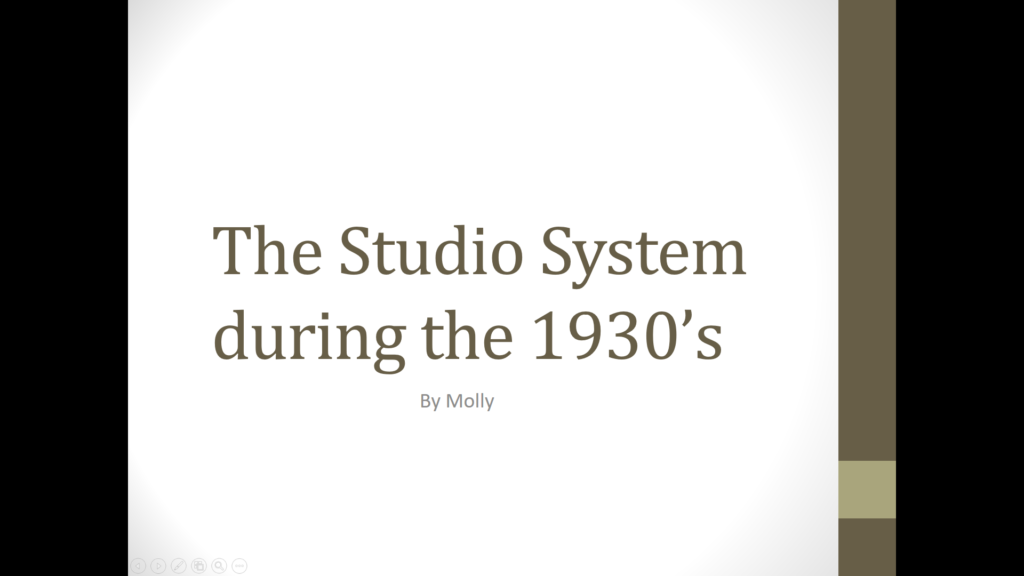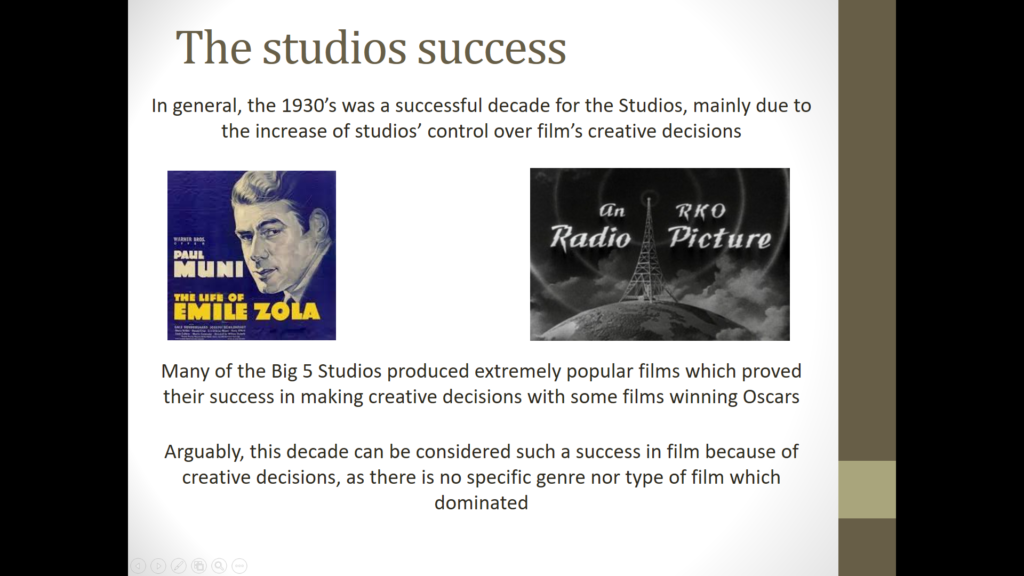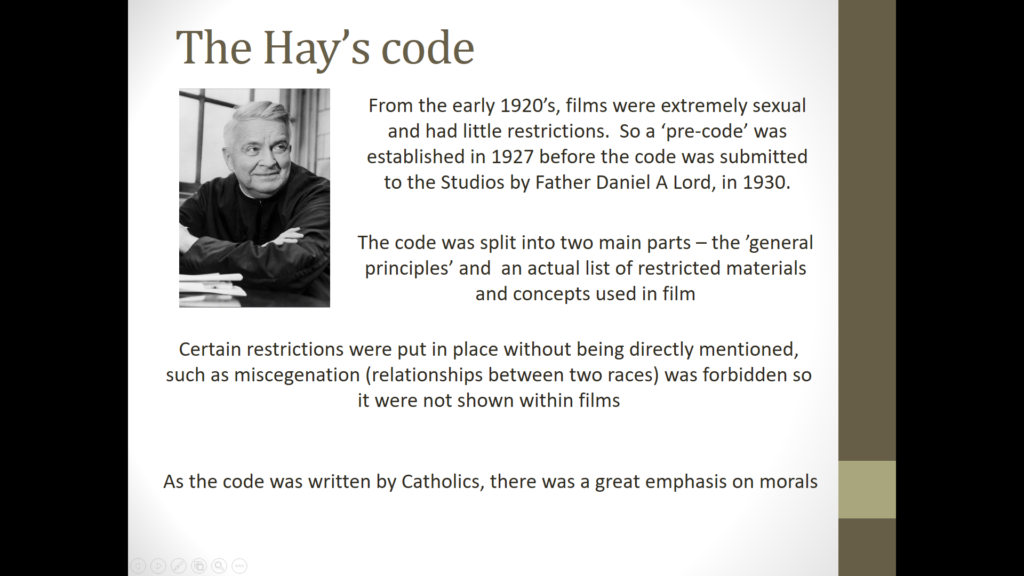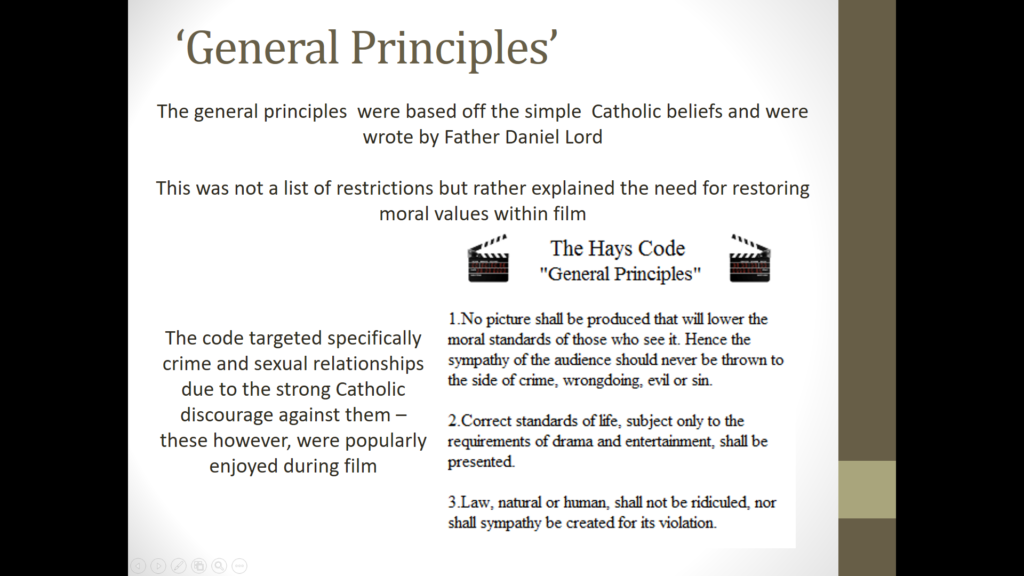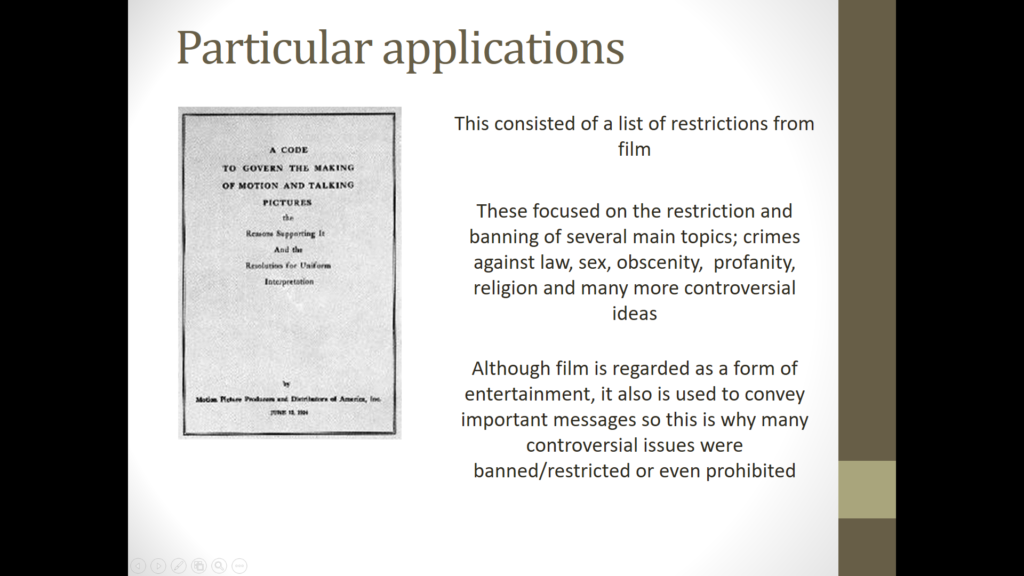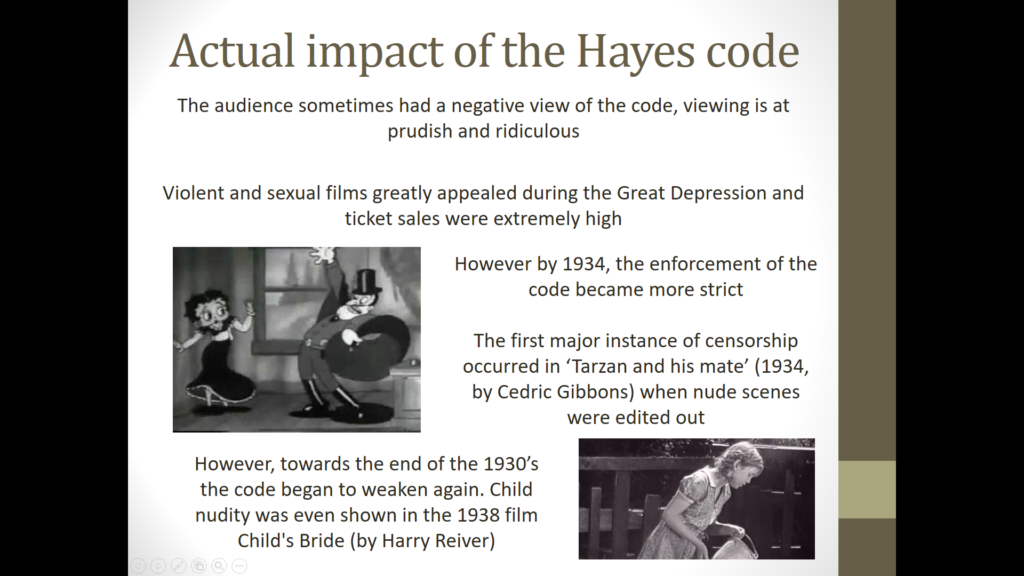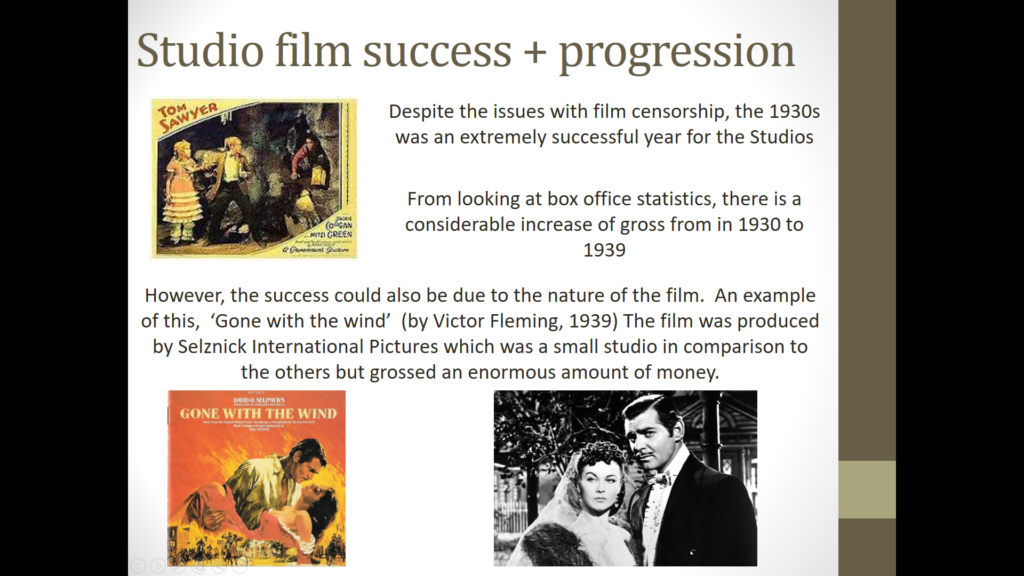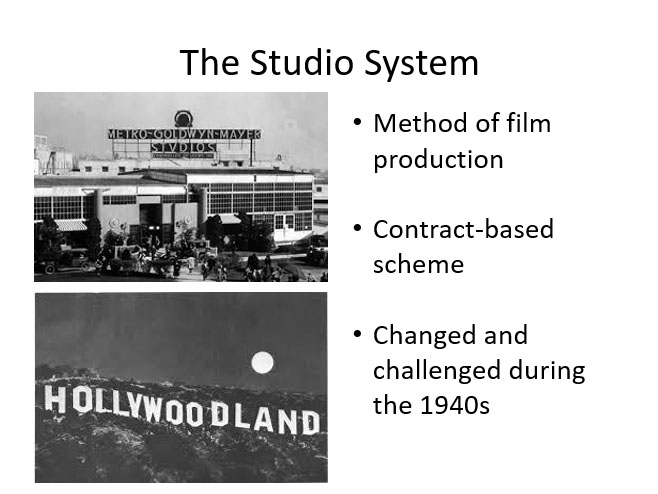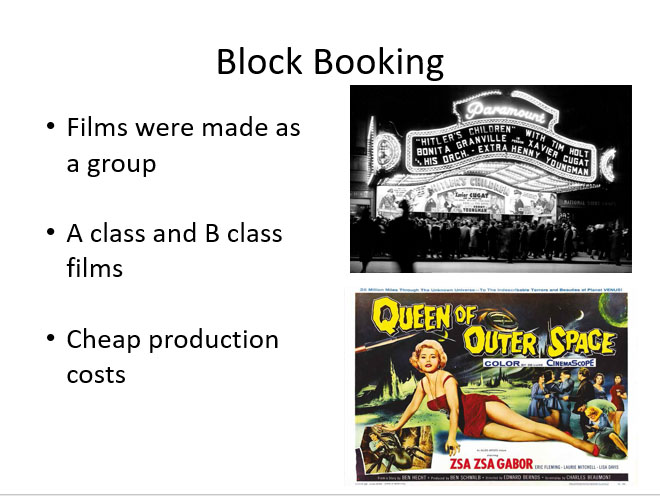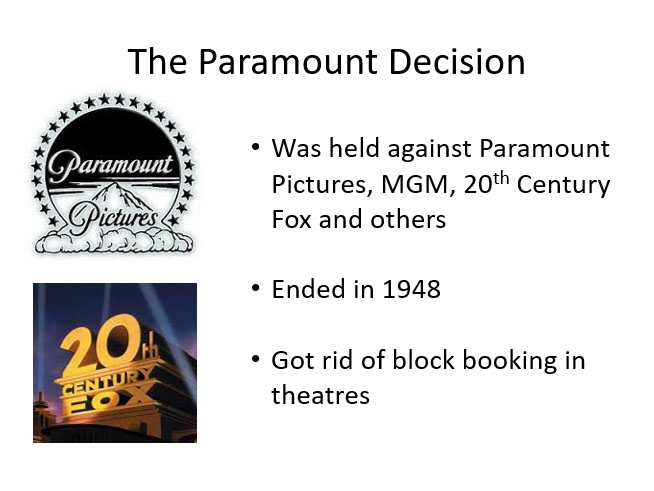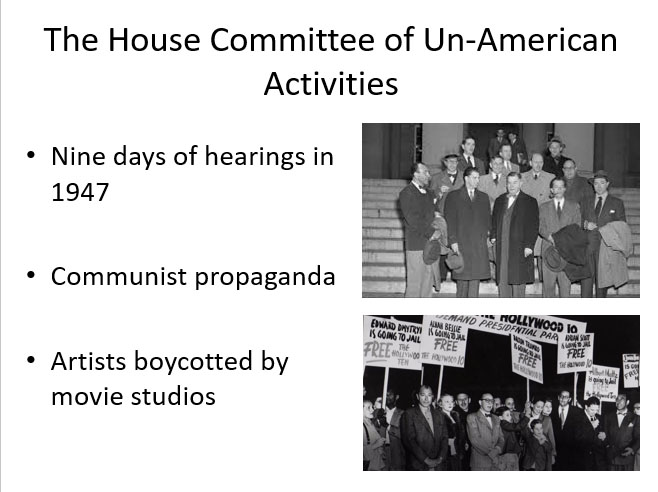Category Archives: Uncategorized
Filters
Mise-En-Scene: Composition
Mise-En-Scene: Lighting
Mise-En-Scene: Space
Mise-En-Scene: Costume Design
1930’s Hollywood sound system
1940’s Hollywood
The Studio System
The Studio System was a method of film production used by major Hollywood studios from the 1920s to the end of the 1940s. It was a contract based scheme, so the same people would be employed for movies, rather than finding new people based on talent. During the 1940s, the studio system was changed due to a number of reasons, and a court case was brought up against it, called the Paramount Decision. This, among other reasons, made the studio system come to an end.
Block Booking
Block Booking was a technique that supported the Studio System and helped it to earn millions of dollars. It was when films would be made in a group, usually a bundle of five, and sold to a theatre together so all five would be shown. Film companies owned specific theatres, so only movies shown by that company would be shown there. These movies would typically be one high quality film, an A class film and then a few B class movies. This meant that movie companies could spent little money of producing cheap, B class movies, but still make lots of profit on them as theatres has to show them because of the block booking.
What Ended The Studio System?
There are four main factors that brought around the end of the Studio System. One of these was the Paramount Decision, which reduced the number of films that were being produced. Also, post-war changes in society meant that people didn’t want to see the same sort of films as before, forcing the studios to change. The rise of television meant that less people were going to the cinema or theatres, and the House Committee of Un-American Activities blacklisted many companies and artists in the film industry.
The Paramount Decision
The Paramount Decision was a turning point for movie studios, and it was partly responsible for the end of the old Hollywood Studio System. It was a case in the US Supreme Court that was held against the major movie studios of the time, with Paramount as the main defendant. Other studios involved were MGM, Warner Bros, 20th Century Fox, RKO Pictures, Universal Studios, Columbia Pictures and United Artists. The movie studios were accused of violating the antitrust laws when the distributed their films. When the case ended in 1948, the verdict was against the movie studios, which forced them to get rid of their theatre chains. They were also forbidden to block book movies, or to sell them to theatres without giving the managers a screening first. This was a major factor causing the end of the Studio System.
The House Committee of Un-American Activities
The House Committe of Un-American Activities held nine days of hearings in 1947 about the Hollywood movie industry, claiming that they were producing communist propaganda. Ten individuals were blacklisted after they refused to answer questions in front of the committee. These people became known as ‘The Hollywood Ten’. They went on to blacklist many others, and more than 300 people were boycotted by studios due to their connections with communist propaganda. Only around 10% of these people could rebuild their careers after this, which led to a dramatic decline in the number of moves that were created during this time.
1930s presentation
Film 1930s presentation PowerPoint
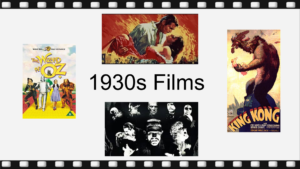
This was the Golden age of Hollywood where American film progressed most.
PowerPoint notes/script
Slide 1

The monster universe was started in the 1920s however its major success occurred in the 30s as it became considered as the first cinematic universe in film history as this decade left the foundations for the next few decades of universal monsters.
The films themselves were successes with over 20 films being made in that 10 year period, 18 what were released and a remake in a second language. Out of all the decades of the universal monster films this has the best and highest reviews with only one movie getting a review less than 70% on rotten tomatoes this shows how these movies have lasted over time accept for the Son of Frankenstein, with 5 films being ranked at a 100%. Frankenstein as well was top of the box office in 1931 making $12 million on a $262,000 budget what has been ranked by the Film institute the 87th best movie of all time. Dracula also gets onto one of the lists as for being the 33rd best villain of all time.
Dracula, Frankenstein and the Invisible Man have all been selected in the US film national registry by the liberty of congress for being culturally, historically and aesthetically significant.
However horror genre was hurt by the Hayes code as it restricted the genre while also hurting the product of already released films as this led to the decrease in films the for the rest of the decade. It also started the decline of the monster universe.
Slide 2
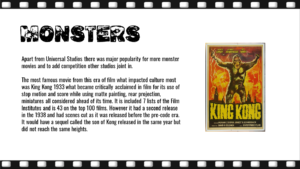
Dr Jekyll and Mr Hyde was another monster film separate to Universal, but this is more well known for the performance than the technological breakthrough. Fredric March’s performance is considered a masterclass with him winning a academy award and was seen on par with Universal Studios horror films. Mirrors Warner Brothers and other studios trying to create a cinematic universe.
Slide 3
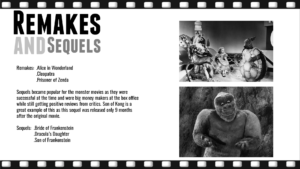
Slide 4
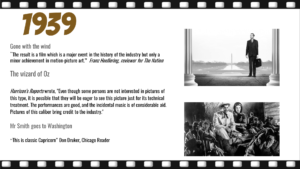
GWTW and TWoO(Flemming)
Gone with the wind and The Wizard of Oz are both considered historically significant in film with both being breakthroughs. Both considered in the top 10 films of all time by the film institute with them being directed both by the same director these are seen as classics. Both movies in together were nominated for 19 awards and winning 15. With inflation Gone with the Wind has become the highest grossing film of all time with $3.7 billion as of 2017. Wizard of Oz is mostly famous for being the first film to be in technicolor. While Gone with the Wind is considered as good by how its casting performance what was seen as incredible from critics while also becoming a breakthrough even with all issues surrounding the production of it.
Mr Smith goes to Washington(Capra)
Was nominated for 11 academy awards and won for best story. Hurt by its controversial opening likely making it less popular than it was actually should of been, it is considered as one of the best films of all time ranking at 29.
Others
Stagecoach(Ford) is ranked as the best Western of all time, The Rains Came(Brown) nominated for 6 academy awards, Gunga Din(Stevens) seen as historically significant.
Slide 5

Victor Fleming: Victor Fleming is one of most decorated and successful directors of all time and is the most celebrated one in the 1930s. During the 1930s he directed 13 movies including movies such as Treasure Island, test pilot and captain courageous however he is most notably famous for his movies of 1939. In 1939 he released 2 movies what are in American Film institute top 10 movies with them being gone with the wind and the wizard of Oz. Both are still iconic in cinema history today with them both winning 13 academy awards for two movies in the same year.
James Whale: James Whale will go down as one of the main reasons for the success of the Universal monster franchise what was the cinematic universe with him directing the Frankenstein films, the invisible man and the old dark house with all 4 films getting critical reception with 100% on rotten tomatoes.
Norman Z Mcleod made 9 films 1930s
Slide 6

Sir Charles Spencer Chaplin KBE (16 April 1889 – 25 December 1977) was an English comic actor, filmmaker, and composer who rose to fame in the era of silent film. Chaplin became a worldwide icon through his screen persona “the Tramp” and is considered one of the most important figures in the history of the film industry. City Lights and Modern Times both were selected for preservation in the National Film Registry by the United States Library of Congress. In the late 1930s his controversial life led to his decline and parallels the decline of the Golden Era of Hollywood at the time where it looked like it was coming to the end.
Film in the 1930’s
Here is the link to my presentation:
https://jerseyedu-my.sharepoint.com/:p:/g/personal/a_matheson09_hautlieu_sch_je/Eerc8vqS96xBmTMF06tSdOEBgsTTXbuotdNxMjwxuihrKA?e=fLfD6I

